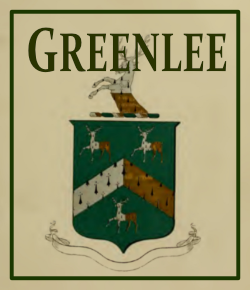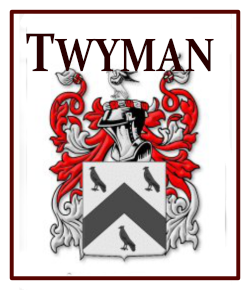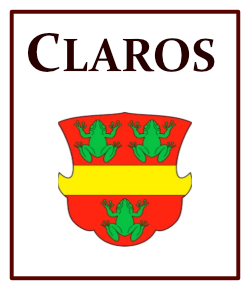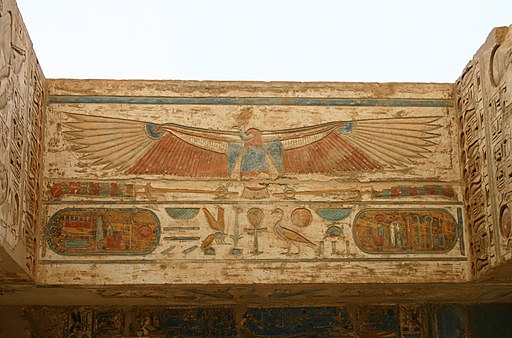
Ancient Egypt and the Fertile Nile River
The Ancient Egyptians developed their civilization sometime between 4000 and 1800 B.C. along the fertile Nile River. The annual floods of the Nile deposited rich soil along its banks and helped establish Egypt as a green oasis in an unforgiving desert. Since the welfare of the Ancient Egyptians depended almost entirely on the Nile an intricate relationship grew between man and the river that sustained them. The Egyptians cultivated the land along the Nile River’s banks and grew essential crops to help sustain their way of life. Their farming endeavors yielded the wheat and barley used for bread and beer and the flax they utilized for their linen. Over time, the Ancient Egyptian’s concept of religion became highly developed and they also advanced their knowledge in medicine, astronomy and engineering, all of which would serve as examples to many societies that followed in their footsteps.
The source of governing power in Ancient Egypt lay with the Pharaohs, who kept the Egyptians united under one kingdom. The Ancient Egyptians revered their king, the Pharaoh, as a god and though authority rested with the Pharaoh, he nevertheless delegated much of the everyday management to priests and administrators. The Ancient Egyptians performed elaborate ceremonies which they believed appeased the Gods and kept the annual floods of the Nile River flowing. They thought that as long as the Nile River flowed, a delicate balance between man and nature existed which ultimately helped keep their society in order. When a Pharaoh died, great care was taken in embalming and mummifying his body and placing it in a stone sarcophagus. This sarcophagus in turn was placed in a large tomb along with all of the dead Pharaoh’s belongings including jewelry, clothing, furniture and food – all the essential needs for the life he would lead in eternity. The walls of the tomb were inscribed with sacred writings in the form of hieroglyphics meant to protect him in the afterlife and to frighten off any would be grave robbers or evil spirits.
Since their society relied to a large extent on agriculture, most of the Ancient Egyptians were farmers. The priests would tax these farmers a portion of their produce which was given to the local temple. Most people in Ancient Egyptian society were illiterate and in fact, only boys were schooled and taught to read and write. As scribes, these boys were groomed to become the priests and administrators who would later help the Pharaoh in managing their society. The scribes used papyrus, a stiff paper made from papyrus reeds, to transcribe the administrative and religious texts of Ancient Egyptian society.
With their dependence on their habitat and the elements of the Nile River valley, it is not difficult to imagine why the Ancient Egyptians projected characteristics of nature and the animal life on their deities. Some notable Egyptian gods include: Horus, Ptah, Hathor, Isis and Osiris. Horus was the sky god, his eyes were the sun and the moon and it is said that his spirit manifested itself within the living Pharaoh. Ptah was the creator god who invented the arts. Hathor, known to the Egyptians as the goddess of love and beauty is said to have raised the sun up to the heaven on her horns. Isis was both the sister and wife of Osiris and the mother of Horus and was thought to have magical powers. Osiris, the god of the dead, would judge souls in the afterlife.
The Egyptians built many pyramids around 2630 B.C. the most famous of which is the Great Pyramid of Giza which may have taken about 30 years to build. Some of the stone blocks in these pyramids weigh as much as 60 tons and it is estimated that over 2.3 million of them were used. Archaeologists believe the scale and dimensions of these pyramids suggest that they had astronomical, mathematical and spiritual purposes. The Pharaohs no doubt built these immense structures to appease the gods and to leave a symbol of their reign as an indelible mark on history, leaving others to behold their engineering skill through the ages.
__________________________________________________________________
REFERENCE: Wikipedia: Ancient Egypt
Family History
Family Births
- On 1608-05-01, Hans Wyshans SCHMIDT is born in Zürich, Zurich, Switzerland
- On 1634-05-01, Hannah JACKSON is born in London, England
- On 1670-05-01, Elizabeth WHITE is born in Marshfield, Plymouth, Massachusetts, United States
Family Deaths
- On 1589-05-01, Gratia SHUTLEWOORTHE dies in Whalley Parish, Lancashire, England
- On 1698-05-01, Hester WAKEMAN dies in New Haven, New Haven, Connecticut, United States
- On 1718-05-01, John BURNETT II dies in South Farnam Parish, Essex, Virginia, United States
- On 1885-05-01, William Fisher HOWARD dies in place unknown
- On 1931-05-01, Robert Davis TWYMAN dies in Fulton, Georgia
- On 2003-05-01, Elizabeth Gilley KINCHELOE dies in place unknown
- On 2005-05-01, Briggs Leon TWYMAN dies in Lubbock, Lubbock, Texas, United States
| Paternal Line | Maternal Line | ||
|---|---|---|---|
 |
 |
 |
 |
Categories
Genealogy
- Genealogy Portal
-
Search genealogical information related to the Greenlee, Murillo, Twyman and Claros families. Please contact us if you think we're related and can help each other in expanding our ancestry trees.


